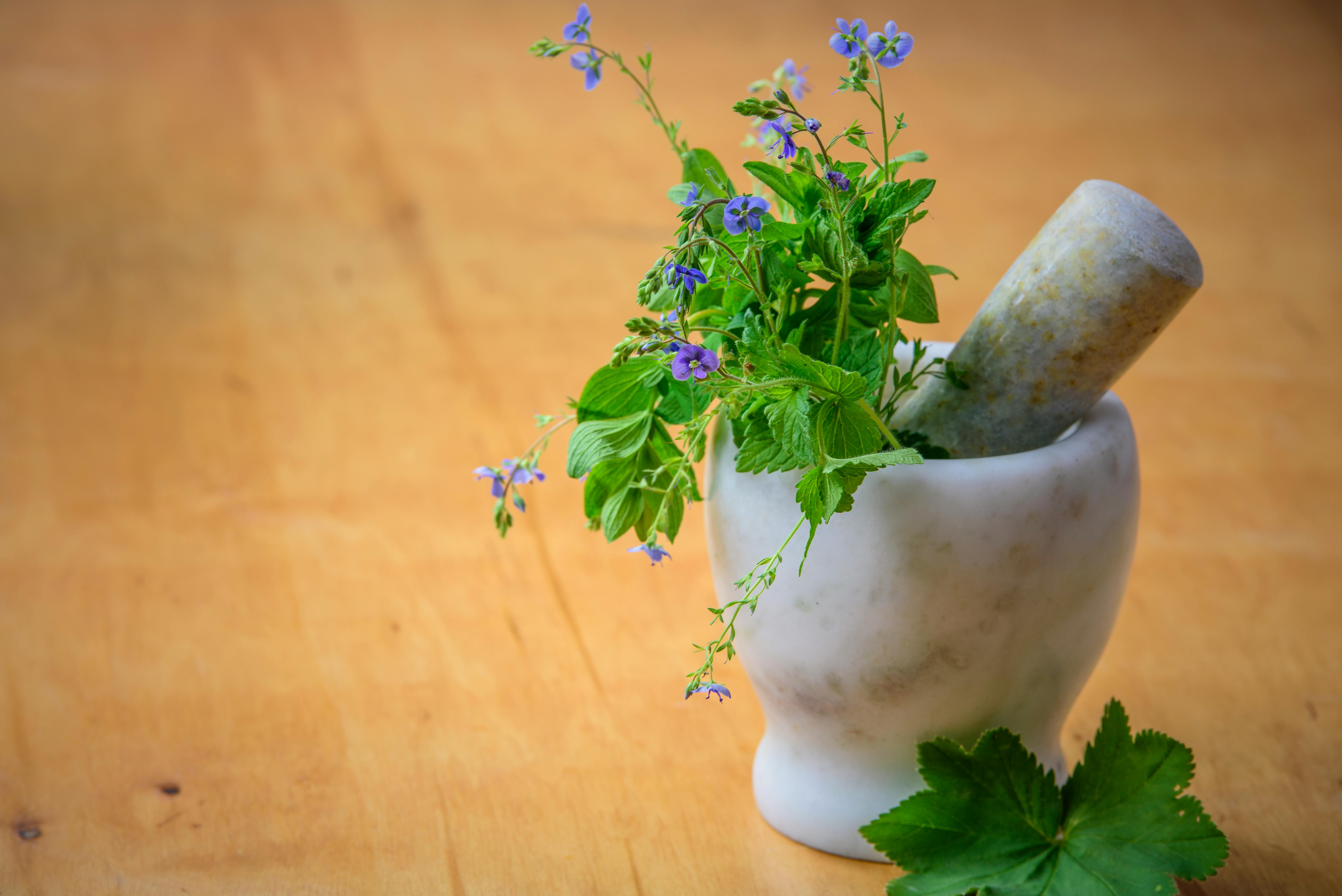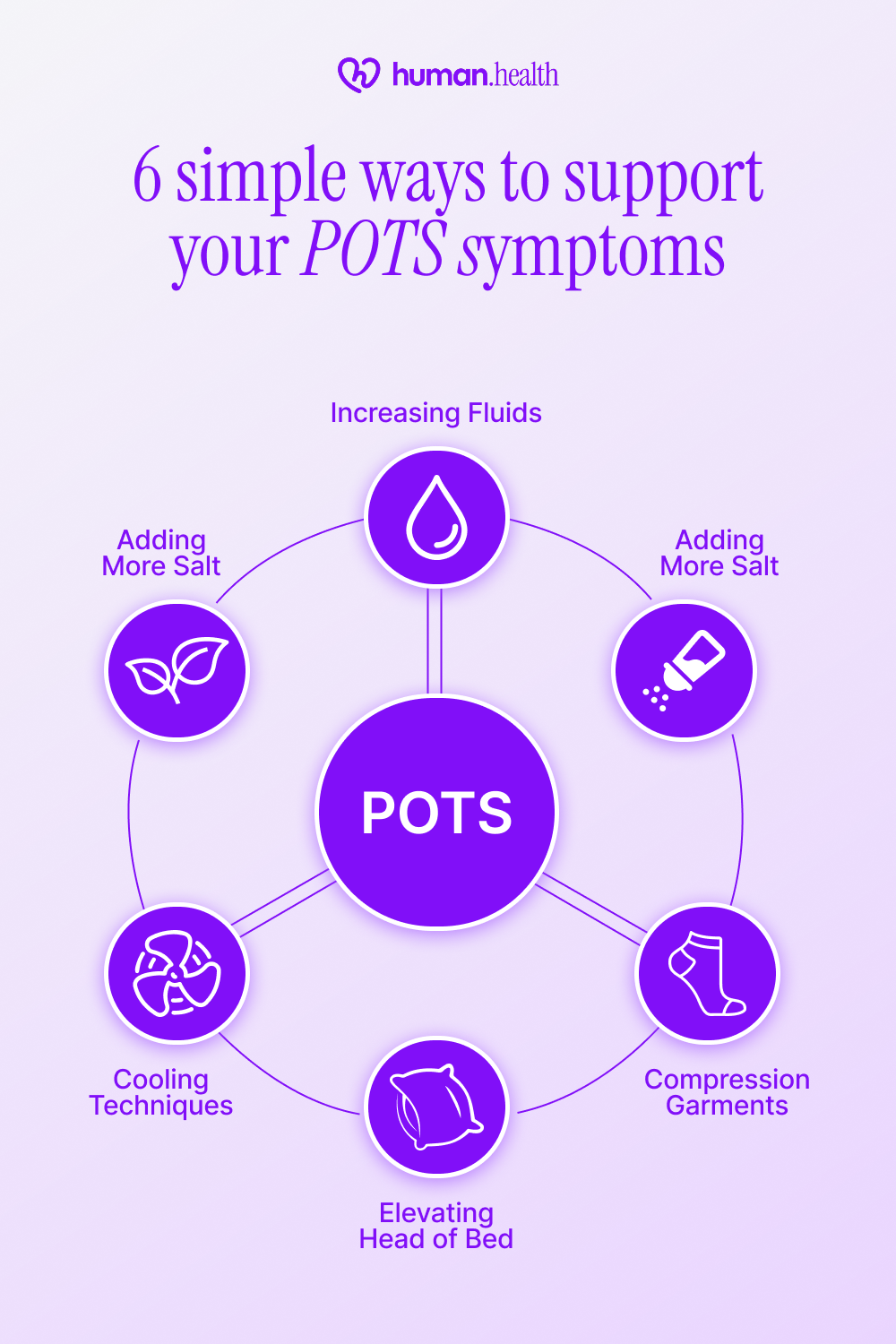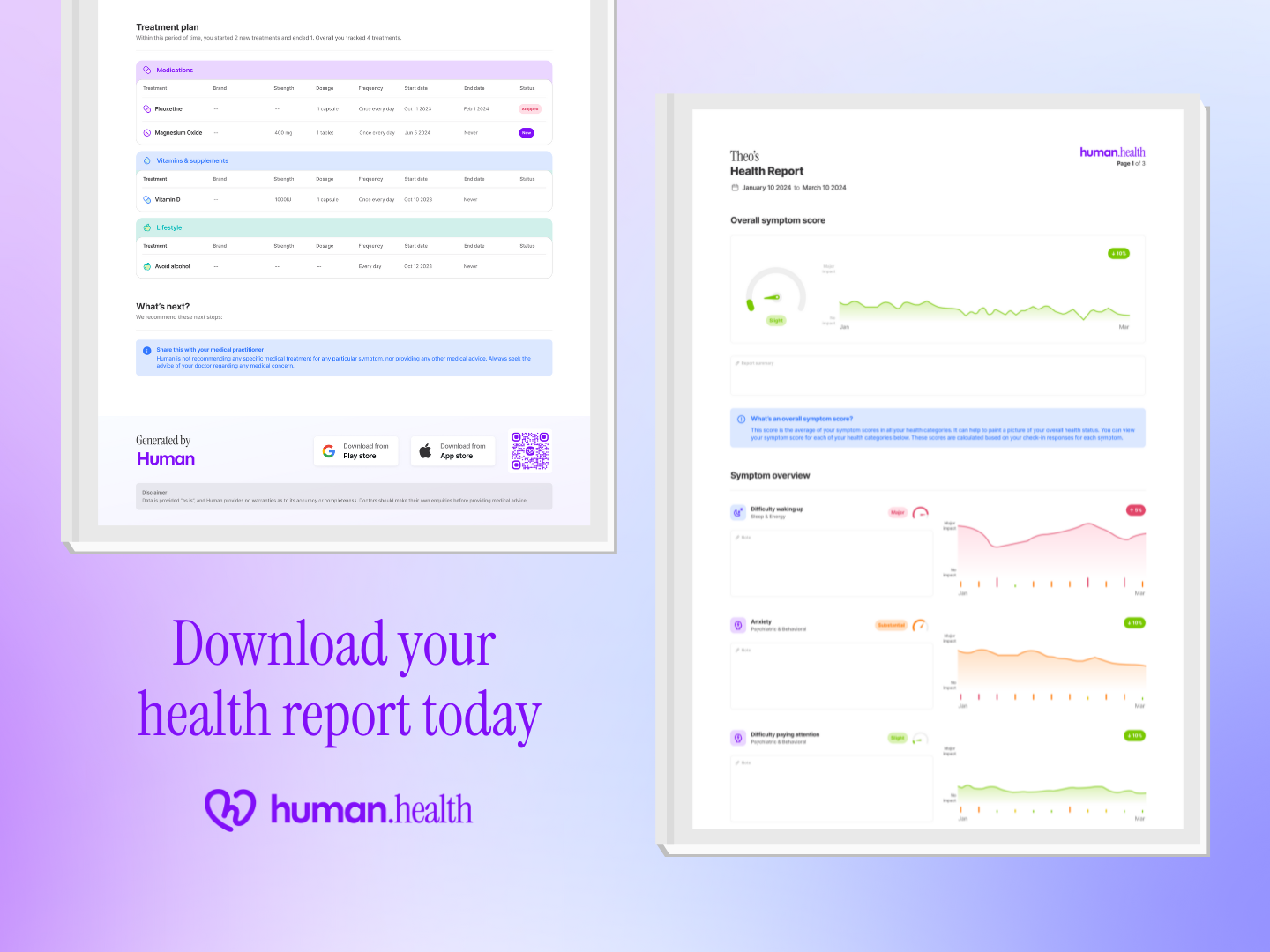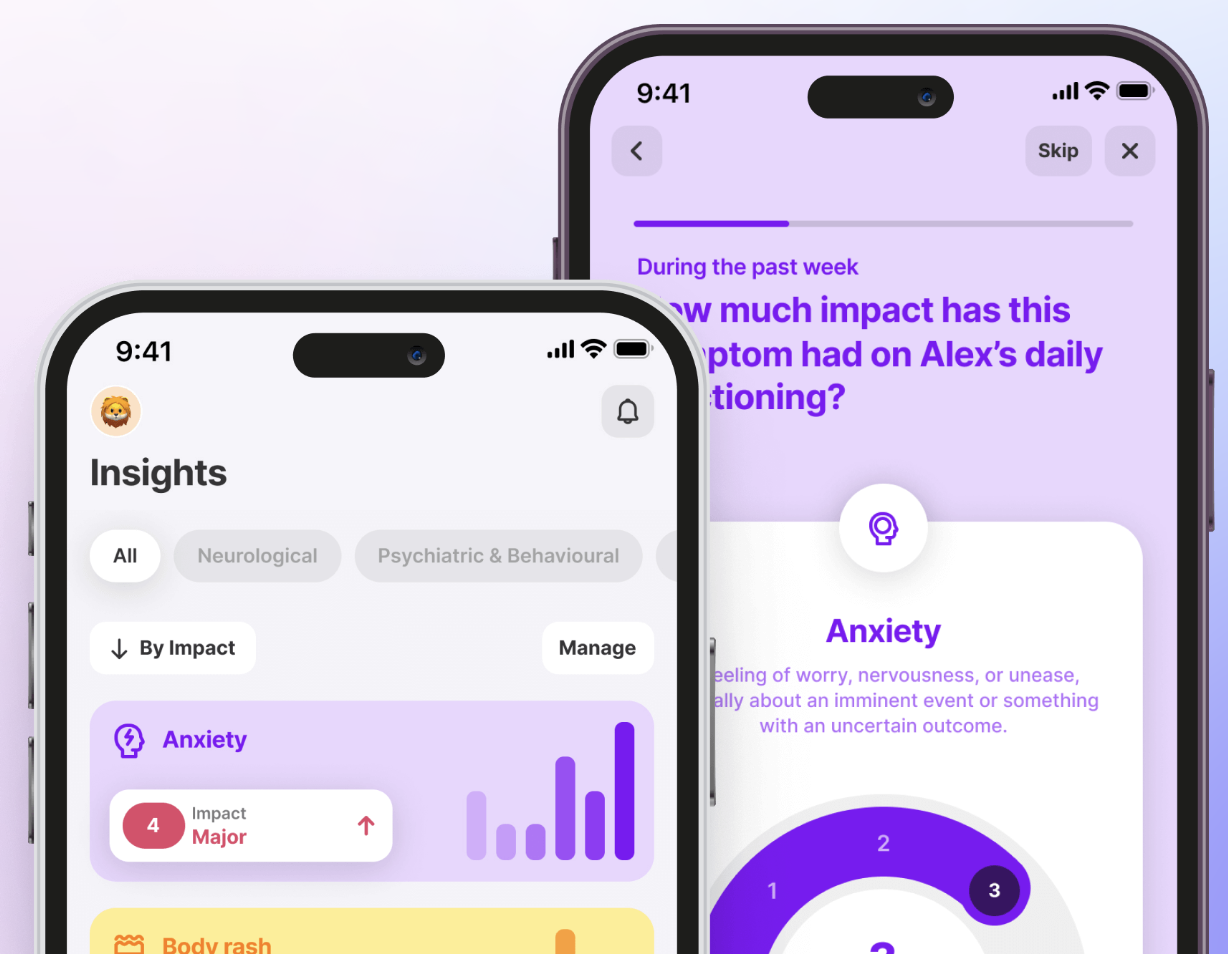Natural Remedies for POTS in 2025: Lifestyle Advice & More
October 1, 2025

- Natural remedies for POTS may support symptom management - approaches such as increasing fluids, wearing compression garments, or adjusting salt intake are commonly explored with providers.
- Lifestyle changes can reduce day-to-day challenges - strategies like gentle exercise, balanced nutrition, and prioritizing sleep may help lessen dizziness, fatigue, and brain fog.
- Tracking with the Human Health app makes a difference - logging symptoms, treatments, and routines can highlight personal triggers and trends for better-informed conversations.
- Everyone’s experience is different - responses vary widely, so it’s important to work closely with a qualified healthcare provider when considering new approaches.
Disclaimer: Human Health is a health tracking platform and does not provide medical advice, diagnosis, or treatment. The information in this article is intended to support, not replace, conversations with a qualified healthcare provider.
Living with postural orthostatic tachycardia syndrome (POTS) can feel exhausting. Understanding if there is a root cause, such as a genetic condition, can be an important step in managing POTS.
Dizziness, fatigue, and brain fog often leave you searching for options beyond prescriptions.
The good news? Natural remedies for POTS may help ease day-to-day symptoms.
In this guide, you’ll learn practical lifestyle strategies and how tracking with the Human Health app can uncover the patterns that matter most.
Natural remedies for POTS that may work for you
Some people with POTS look for non-medical strategies to ease day-to-day symptoms. While none of these options replace professional care, they may provide supportive relief when used as part of a broader plan. Always discuss new approaches with your healthcare provider.

Increasing fluid intake
Research shows that increasing daily fluid intake can help people with POTS by reducing tachycardia and improving blood volume, which may ease light-headedness and fatigue. Water is usually the go-to, though some also use electrolyte drinks.
{{pro-tip-1}}
Adding more salt (with health-provider guidance)
Extra salt may help the body retain fluids and support blood pressure stability. Because individual needs differ, it’s important to talk with your provider before making changes.
Compression garments
Wearing waist-high or abdominal compression garments can reduce blood pooling in the abdomen and legs, improve stroke volume, and help ease orthostatic symptoms in people with POTS. They can be uncomfortable at first, but some people find them effective for easing dizziness.
Cooling techniques
Heat can make POTS symptoms worse for some people, as higher temperatures cause blood vessels to widen and reduce blood flow to the brain. Guidance from POTS UK notes that keeping your environment cool (for example, by using fans, taking cool showers, or wearing breathable clothing) may help ease dizziness and fatigue during warm conditions.
{{pro-tip-2}}
Elevating the head of the bed
In people with POTS, elevating the head of the bed by a few inches can help maintain blood volume overnight and reduce morning light-headedness and dizziness. Even a small incline can make a difference for some.
Herbal and nutritional supplements
Some studies suggest that supplements like vitamin D may help in POTS-related or orthostatic symptoms, though results are mixed and data are limited; safety, doses, and individual response vary, so these should only be tried with provider approval.
{{pro-tip-3}}
Comparison of natural remedies for POTS
How lifestyle changes may improve POTS symptoms
Beyond natural remedies, everyday lifestyle adjustments can make a meaningful difference in living with POTS. While these changes won’t replace medical care, they may help reduce dizziness, fatigue, and brain fog when combined with professional guidance. Tracking them in the Human Health app can reveal which strategies work best for you.
Structured sleep routine
Going to bed and waking up at consistent times can help regulate your body’s rhythms and may lessen fatigue. Prioritizing good sleep hygiene (like a cool, dark room and avoiding screens before bed) often supports steadier energy.
{{inline-cta-1}}
Small, frequent meals
A small observational study suggested that large or carbohydrate-rich meals can worsen POTS symptoms by diverting blood flow to the digestive system, triggering greater orthostatic heart rate increases; eating smaller, more frequent, balanced meals may help maintain steadier energy and reduce post-meal symptom spikes.
Balanced nutrition
Meals that emphasize lean protein and low-GI wholegrain carbohydrates can help sustain steadier energy, while large or high-sugar meals may worsen symptoms in POTS by diverting blood flow to digestion and causing post-meal crashes.
Limiting excess caffeine may also reduce tachycardia and sleep disruption, though effects vary by person.
Stress management strategies
Stress is often elevated in people with POTS, and many report that stressful periods make symptoms worse, so finding calming routines such as breathing exercises, journaling, or quiet time outdoors may help. Even small breaks during the day can make a difference.
{{pro-tip-4}}
Mind-body practices
In POTS patients, practices such as slow deep abdominal breathing or breathing control interventions may help reduce orthostatic heart rate increases and lessen symptoms; similarly, meditation or yoga are being explored for their ability to lower stress, which may reduce flare-ups.
Pacing daily activities
Overexertion often worsens POTS symptoms and can trigger flares, so breaking tasks into smaller steps, taking regular breaks, and listening to your body may help prevent symptom spikes.
Staying cool indoors and outdoors
Warm environments can make symptoms harder to manage for some people with POTS. Guidance from POTS UK notes that hot weather can worsen symptoms by increasing fluid loss. Cooling strategies such as using fans, wearing breathable clothing, taking cool showers, or applying cold packs may help reduce discomfort during warmer conditions.
Posture awareness
Getting up too quickly can trigger lightheadedness. Moving slowly when standing or sitting with legs elevated may ease transitions.
Consistent physical conditioning
Recumbent or semi-recumbent exercises (like cycling, swimming, or rowing), started gradually, can improve circulation, stroke volume, and orthostatic tolerance over time in POTS. Consistency often matters more than intensity, and for many individuals, incorporating physical therapy for POTS under professional guidance can further enhance recovery and long-term symptom management.
Mindful hydration throughout the day
Rather than drinking large amounts all at once, sipping fluids regularly may help maintain steadier hydration. Pairing fluids with small snacks can also reduce lightheadedness.
{{pro-tip-5}}
Personal experiences with natural remedies for POTS
Hearing from others living with POTS can make the condition feel less isolating. These stories are inspired by real community accounts shared on forums and support groups. They highlight the wide variety of approaches people try, from diet to exercise to stress management. Results are personal and not medical advice, but they can spark ideas to discuss with your healthcare provider.
Inspired by real stories: food and stress
Some people have found that eating more protein, balancing carbohydrates, and reducing sugar seems to help with daily flares. Many also emphasize stress management, often describing relaxation techniques as just as important as diet in feeling more stable.
You can learn more about the connection between POTS and blood sugar to better understand how dietary choices may affect symptom management.
Inspired by real stories: workouts that work
Others share that seated or recumbent exercises, such as rowing or cycling, improve stamina and stability. While not always easy to keep up consistently, community voices often describe feeling better when gentle exercise becomes a regular routine.
Inspired by real stories: hydration and salt
Hydration is a recurring theme. Some individuals drink large amounts of water daily, sometimes adding electrolytes. For a number of people, extra salt helps, while others say too much salt or sugar can make symptoms worse, showing how personal responses vary.
Things to avoid if you have POTS
Certain triggers can make POTS symptoms worse, though they often vary from person to person. Learning what to avoid (and tracking your own responses) may reduce flare-ups. The Human Health app can help by logging triggers and symptoms so you can share patterns with your provider.
1. Prolonged standing
Standing in one place for too long often leads to blood pooling in the legs, causing dizziness or near-fainting. If you can, keep your legs moving, shift your weight, or take breaks to sit. Even small movements can help circulation and reduce strain.
2. Excessive heat
Hot environments, whether outdoors in summer or indoors in a shower, can make dizziness and fatigue worse. Using cooling strategies like fans, shade, or shorter, lukewarm showers may help reduce these effects.
3. Dehydration
Maintaining hydration is one of the best-established non-pharmacological strategies for POTS. Guidance from POTS UK and clinical research from the American College of Cardiology highlight that adequate fluids, along with sufficient salt intake under medical supervision, may help stabilize blood pressure and ease orthostatic symptoms.
4. Heavy meals
Large or carbohydrate-rich meals can make symptoms worse by redirecting blood flow to digestion. Choosing smaller, balanced meals throughout the day may help keep energy steadier.
5. High caffeine intake
Caffeine can affect people with POTS in very different ways. Some feel more alert, while others experience worsened tachycardia or disrupted sleep. If you notice stronger symptoms after coffee or energy drinks, it may help to cut back.
6. Rapid position changes
Standing up suddenly or shifting positions quickly can trigger lightheadedness. Moving slowly and giving your body time to adjust may help reduce flares.
Not every trigger affects everyone the same way, but becoming aware of your personal patterns is key. Tracking symptoms alongside possible triggers can help you spot connections and share useful insights with your healthcare provider.
Monitoring and tracking POTS symptoms
Living with POTS often means symptoms fluctuate from day to day. What feels overwhelming one week might ease the next, making it hard to describe your experience in a short appointment.
Tracking gives you a clearer record of those ups and downs so you’re not relying on memory alone.
With the Human Health app, you can log daily symptoms, hydration, activity, or lifestyle changes and then create exportable PDF summaries. Instead of trying to recall everything on the spot, you walk into your provider’s office with patterns and insights that make conversations more focused and productive.

With the Human Health app: track and log everything, get reminders, insights, and more
Managing POTS isn’t about a single fix. It’s often the result of small changes working together, from hydration and movement to stress management and rest. The Human Health app helps you stay on top of these adjustments by logging symptoms, setting gentle reminders, and creating clear summaries for your provider.
Try the Human Health app today and see how tracking can bring more clarity and confidence to your care.
Disclaimer: Human Health is a health tracking platform and does not provide medical advice, diagnosis, or treatment. The information on this site is intended to support, not replace, conversations with qualified healthcare professionals.
References
- National Library of Medicine: Diagnosis and management of postural orthostatic tachycardia syndrome: A brief review
- JACC: Compression Garment Reduces Orthostatic Tachycardia and Symptoms in Patients With Postural Orthostatic Tachycardia Syndrome
- Springer Nature Link: Mechanisms of post-prandial symptoms in postural tachycardia syndrome and other updates on recent autonomic research
- National Library of Medicine: Deep abdominal breathing reduces heart rate and symptoms during orthostatic challenge in patients with postural orthostatic tachycardia syndrome
- National Library of Medicine: Cognitive and Psychological Issues in Postural Tachycardia Syndrome
- Neurology Journals: Postural Orthostatic Tachycardia Syndrome and Vitamin D Deficiency (P03.034)
- National Library of Medicine: Coenzyme Q10 Supplementation in Orthostatic Hypotension and Multiple-System Atrophy: A Report on 7 Cases
- American College of Cardiology: Effect of High Dietary Sodium Intake in POTS Patients
- National Library of Medicine: Compression Garment Reduces Orthostatic Tachycardia and Symptoms in Patients With Postural Orthostatic Tachycardia Syndrome
- ScienceDirect: The use and effectiveness of exercise for managing postural orthostatic tachycardia syndrome in young adults with joint hypermobility and related conditions: A scoping review
- POTS UK: Temperature regulation
- Harvard T.H. Chan School of Public Health: Carbohydrates & Blood Sugar
- Heart and Mind: Psychological stress in postural orthostatic tachycardia syndrome: A pilot pre-COVID survey
- Johns Hopkins Medicine: Standing up to POTS
- National Library of Medicine: Exercise and Non-Pharmacological Treatment of POTS
- National Library of Medicine: Postural Tachycardia Syndrome (POTS)
This is a div block with a Webflow interaction that will be triggered when the heading is in the view.


Learn What Is Helping Improve Your Symptoms
Determine what is helping improve your symptoms with the Human Health app, so you can discuss ideas with providers.







Pro tip
Keep track of how much water you drink each day and note whether dizziness or fatigue changes. A tool like the Human Health app can make it easier to see patterns over time.
Pro tip
When experimenting with cooling strategies, recording when you use them can help you figure out which ones actually ease your flares.
Pro tip
Use the Human Health app’s supplement tracker to record start dates and doses, and track any changes in symptoms alongside this in your symptom log for easier review with your provider.
Pro tip
If stress makes your symptoms worse, try noting stressful days alongside flare-ups. Over time, this can help you see the link more clearly
Pro tip
Set gentle reminders in the Human Health app to record water intake and watch for patterns in symptom relief.

.jpg)

.png)



.png)

